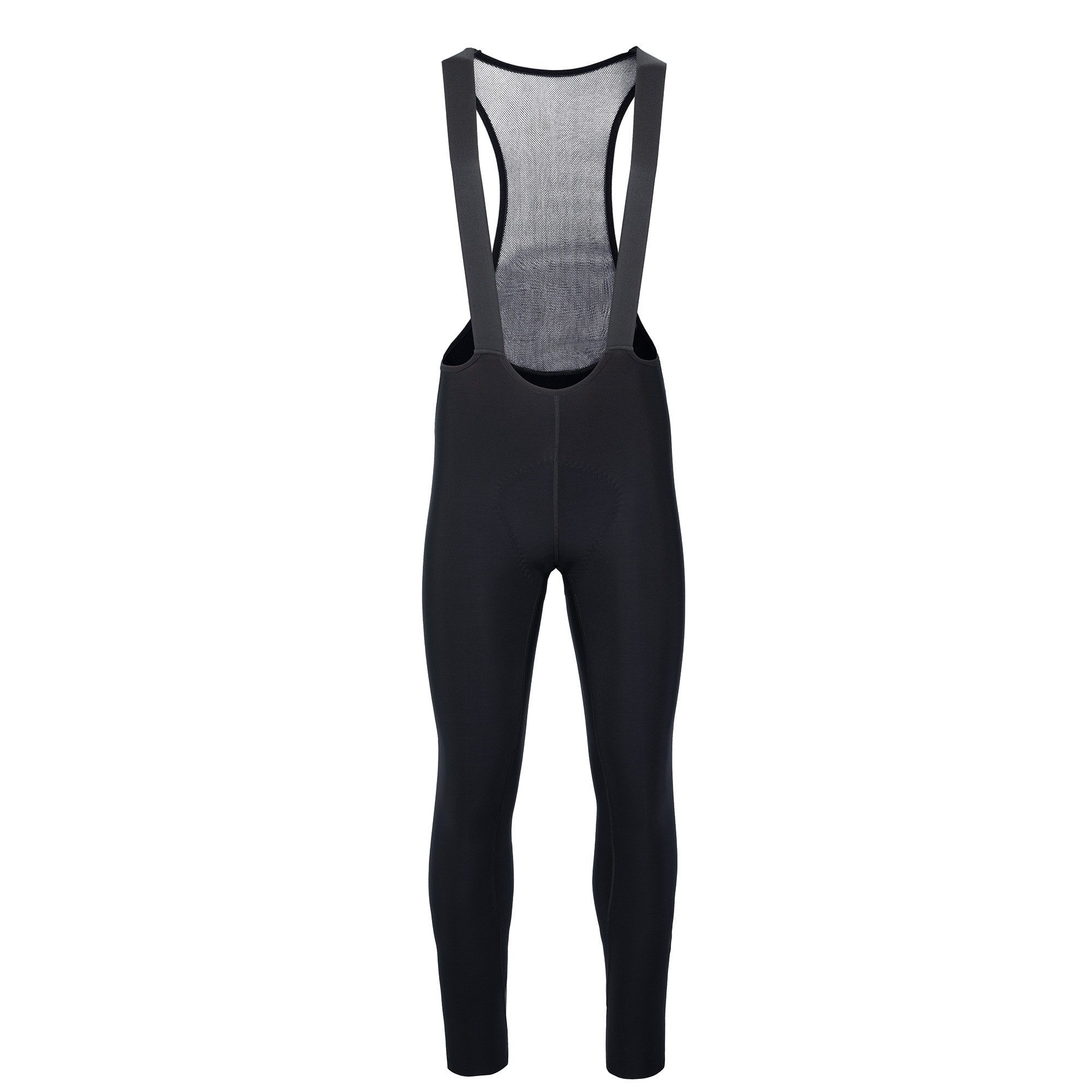There's No Such Thing As Bad Weather
a Cold Weather Layering Guide
Actually there is. There’s plenty of terrible weather, in fact.
I’m from New England and have raced my bike in all sorts of hairy conditions. There was that gale-force-windy Gent-Wevelgem where I was hit in the face with a bike while I was on my bike. I remember once early in my career while on a training ride I decided it was time to pull to the side of the road, sit on a snowbank to literally breathe warmth back onto my feet figuring if I didn’t do it I was at risk of losing some toes to frostbite. I raced a Tour of California stage that was so hot a teammate succumbed to heat stroke, fell off his bike while having a seizure, and literally cooked his backside with 3rd degree burns on the scorching pavement — his eight year professional career ended on that pavement. Cycling is brutal.
So, yes, these are all examples of extremely bad weather. The sport of cycling is tough. It’s at times unrelenting. But it rewards those who have the perseverance to kit up, go outside and not just bear it but embrace it. On those days, you’ll come home feeling like a hero.
The question popped into my mind as I rode the final few feet up the driveway and back to the barn, Would you rather ride 107 miles in 24° or 24 miles in 107°? It turned into my Strava ride title and based on the number of responses, that struck a chord with more than just a couple of folks. Many messages hit my inbox to the tune of,
How do you dress for cold weather?
Let’s begin with the thesis: it’s all about layering.
We know that Sir Isaac Newton showed that a body in motion stays in motion until acted upon by an outside force. Adding to that, there’s the winter riding knowledge imparted by Sir Tedward Kingsly:
a body in motion produces a remarkable amount of heat. A body at rest stops producing a remarkable amount of heat, so layer appropriately.
The truth is that if you’re moving at any reasonably rate, your body is a furnace just spewing out warmth. The right layering will allow you to capture that heat, the right clothing will respirate appropriately, and you’ll stay warm as toast. Furthermore, especially when temperatures have dipped well below freezing and you’ve sweat up a storm, you don’t want to find yourself with a shield of icy clothing.
I learned this lesson on the James Bay Descent where early on in this week long adventure, the daily temperature hovered around -40 degrees. As soon as we started moving, we warmed up quickly. I knew the risk of overdressing but figured there was no way I would sweat at these unliveable temperatures. Lo and behold, an hour into the ride my jacket started to harden up with ice. Lesson learned.
And that lesson is to layer appropriately. The ability to zip up, zip down, take on and off, all in the name of thermoregulation will let you ride for as long as you have energy in the tank.
My Cold Weather Guide:
-40 to 20 degrees:
Believe it or not, even in these super duper cold temperatures, up top I wear just two layers, the Alpha Long Sleeve with the Signature Soft Shell. The Alpha is super duper warm yet incredibly breathable. Same story with the Soft Shell, it repels whatever is falling from the sky and fits like the comfy soft shell that it is.
The Soft Shell zips from the bottom up as one would expect, but then to help control your temperature, you can unzip from the top down or the bottom up. It’s within the past few years working with Velocio that I realized how valuable this simple feature is.
Downstairs, I’m thrilled with the Zero Tight. In a past lifetime, I found thermal tights to always keep their chamois as an afterthought. Velocio uses the same incredibly comfy chamois as always in these tights as their best bibs so as to keep your undercarriage happy no matter the conditions.
20 to 40 degrees:
A merino wool baselayer is a truly amazing thing — they’re super light, surprisingly warm, and they don’t stink. Those are a few reasons why I’m such a big fan of the Merino Long Sleeve. In this temperature range, I opt for one of two things: the Merino Long Sleeve plus Signature Soft Shell is primo. The Marino is a tiny bit thinner than the Alpha, so it pairs perfectly with the Signature Soft Shell in these slightly higher (but still low) temps. Alternatively, the Merino Long Sleeve plus the Recon Thermal Long Sleeve is sleek and comfy. Keep a spare rain vest on hand since this outer long sleeve jersey/jacket isn’t waterproof, just in case the sky opens up.
Then down below I can’t say enough good things about the Thermal Bib Tights. Just like their Zero tights brethren, the fit is absolutely perfect. In general I used to dislike tights, but I realize that’s because they were designed by people who never ride outside. Velocio is designed in New England and they test and test and test before producing the goods. I now look forward to wearing these badboys.
40 to 50 degrees:
A temperature guide in subjective in the first place, but it becomes remarkably so in this range. I personally don’t consider north of 40 degrees cold. To me, this range is now “cool” and so welcomes more options for you the cyclist. A thinner sleeveless baselayer paired with the Recon Thermal Long Sleeve will make you mighty happy. A long sleeve Merino or standard baselayer plus the Signature Long Sleeve is stellar too. A vest is among the best things you could grab as you head out the door.
Accessories:
Not all clothing is clothing for you. Fenders are clothing for your bicycle and should be among your best friends this time of year. In the freeze/thaw cycle that’s characteristic of this season, just as it’s in your best interest to stay dry from sweating, you’ll want to stay dry from gritty, grimy road slop. I’ve had a lot of luck with various Planet Bike fenders. I prefer relatively quick clip-ons that take 20 minutes of initial installation. After that if you want to install or remove them, then just 90 seconds will get the job done, but usually I keep them on all winter and spring.
The time of year is still questionable for light, so a powerful front and rear light is highly suggested. Cycliq Fly 6 (rear) and Fly 12 (front) are a nifty light and camera combination delivered in a slick package.
Staying warm from the inside out is a cheeky move. Although not in the photo above, when it gets to the 25 and below temperature range, I recommend a basic insulated waterbottle filled with hot Mapleaid partnered with a fully vacuum thermal water bottle. Even after an hour in sub-32 degree temps, that traditional insulated bottle will cool quickly and two hours in, you’ll have a bottle full of slush if you aren’t drinking. But with this combo, you’ll stay hydrated by drinking my recommended bottle per hour, then take the piping hot liquids from the vacuum bottle and replenish the insulated bottle. Trust me on this one, it’s been a lifesaver.
Some people have warm hands and toes. Other people suffer from odd circulation and their hands and feet are like ice. Consider me painfully in the second group. Keeping your hands and feet warm are critical to prevent mid-ride experiences like I mention in the opening paragraph where sitting in a snowbank is the solution to my problem. The Zero Glove will take you down into the 30s comfortably, and then below that Bar Mitts offer protection far lower on a road bike or 45NRTH’s Cobrafist are like an igloo of warmth for flat bar bikes. Mittens are a natural choice if you’re riding in the teens and below.
The Zero Bootie uses your body’s natural warmth as a barrier to the cold temperatures just millimeters away. Super pro-trick: use a chemical toe warmer on top of your shoe, but within the bootie for an added few degrees of warmth when it’s really frigid outside. Slightly thicker wool cycling socks are a plush convenience that are worth the investment.
You want as little facial exposure as possible, so the Merino Winter Collar is a thing of absolute beauty. Soft, breathable, it’s like a caressing hug to your face. I’ve seen people put tape on the vents in their helmets. I’ve never taken that step, but the Zero Cap will keep your toasty head in good stead.
So that’s a wrap my friends. Truth be told, I use lots of other clothing from Velocio that’s not listed here as well. Their Rain Jacket, Recon Vest, Wind Vest, and lots of other best-in-the-business clothes. Fire questions my way or let me know if this works for you. But this guide will definitely help steer you in the direction of a warm, happy ride. Me? I’m definitely a 107 mile in 24 degree temps kind of guy!





